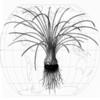| Publication Type: | Journal Article |
| Year of Publication: | 2001 |
| Authors: | S. B. Hoot, Taylor W. C. |
| Journal: | American Fern Journal |
| Volume: | 91 |
| Issue: | 3 |
| Pagination: | 166 - 177 |
| Date Published: | 2001/// |
| Abstract: | Despite its ancient origins, its worldwide distribution, and adaptation to diverse habitats, Isoëtes has a highly conserved morphology. This feature has made it difficult to resolve species and species relationships using morphological characters. In this paper, we report the utility of nucleotide sequences from the nuclear internal transcribed spacer (ITS) regions, chloroplast atpB/rbcL intergenic spacer region, and second intron of a LEAFY (LFY) homolog for identifying species relationships, delimiting basic diploid species, and determining hybrid origins. Variation in the ITS regions and atpB/rbcL spacer is most useful at the family level in Isoëtes and the LFY second intron is appropriate at the species and population level. The tree resulting from an analysis of the combined nuclear ITS and chloroplast atpB/rbcL spacer contains three major well supported clades (bootstrap ≥ 99%): an Old-World/California clade (I. abyssinica, I. longissima, I. velata, I. nuttallii, and I. orcuttii), an Asian/Australian clade (I. taiwanensis, I. japonica, I. kirkii, and I. drummondii), and a poorly resolved clade consisting of nine North American species. To further resolve and delimit the North American species, a combination of the LEAFY second intron and ITS data was used. The resulting consensus tree has limited resolution, supporting the hypothesis that the North American species complex radiated rapidly. The combination of LFY and ITS data provided numerous characters, both substitutions and indels, that are useful in species delimitation and identification of cryptic species. ITS sequence data, through additive banding and sequence misalignment, is also useful in confirming interspecific hybrids and determining their parental origins. |
| URL: | http://www.scopus.com/inward/record.url?eid=2-s2.0-0040332183&partnerID=40&md5=e97f5c223e9a884b67c6347a0db81dd5 |
